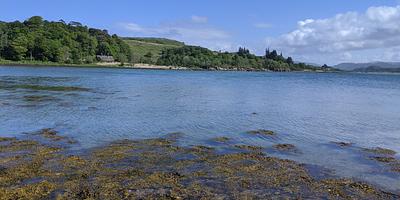
Learning from others: a visit to the West Coast
By Marie Seraphim
One of the perks that comes with my job is that I get to do training trips in wonderful locations around Scotland to learn about seagrass restoration. One such opportunity arose this May when I headed to the West coast of Scotland to explore the seagrass meadows of Loch Craignish. The first thing that striked me as Lyle (my seagrassy counterpart at The Ecology Centre) and I drove down to Argyll from Edinburgh is how much wilder things appeared to be over there. As we passed through the local village of Ardfern, we gawked at whimsical plants lining the side of the road. Upon our arrival we received a very warm welcome from our hosts at Seawilding, a community-led charity actively involved in marine restoration here in Scotland. We were to spend the following week exploring the local seagrass and restoration spots as well as assisting Issy, a PhD student at Edinburgh Uni and Project Seagrass, with her fieldwork season.
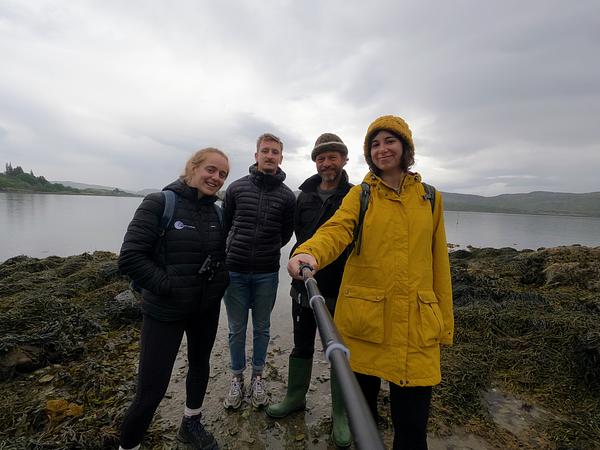
This trip was a great opportunity for Lyle and I to get to know the incredibly hard working people at Seawilding, learn some lessons in conservation and get some much needed pointers for our own restoration project. Last year Seawilding planted ¼ hectare of seagrass in Loch Craignish with low-cost methodologies, making this the first seagrass restoration project in Scotland. They also aim to grow 1 million juvenile native oysters in the Loch as part of their restoration programme. When we were there, we received the wonderful news that their restored seagrass seeds had started to sprout. How inspiring! We highly recommend that you watch their short film. Giving Issy a hand with her data collection also allowed us to hone our seagrass skills. Our first challenge was donning thick wetsuits (the thickest I ever wore!) while braving strong wind and rain.
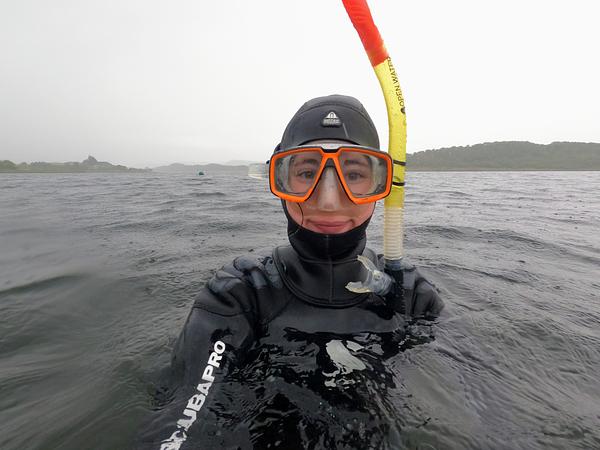
After a fair bit of faff on the coast with the gear (I misplaced a glove and realised that I somehow had brought two left boots instead of a left and a right), we were finally ready to jump in. The cold water was a shock, but we were soon rewarded with vistas of a gorgeous seagrass meadow. Everywhere we looked was an expanse of green, seagrass blades gently swaying in the water and little crabs scuttling about, oblivious to the windy conditions above the water.
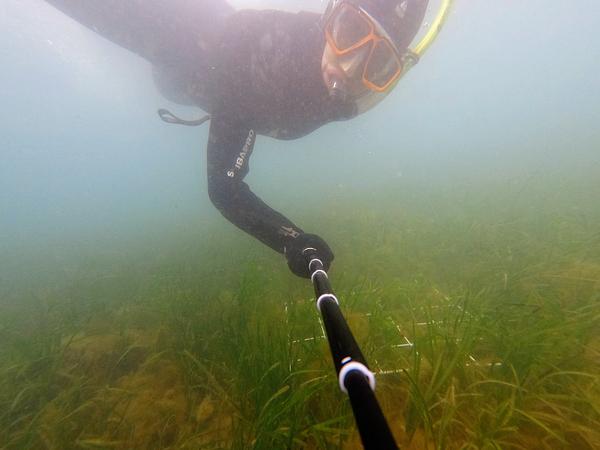
We emerged from our snorkel frozen to the bone but with big smiles on our faces. A hot shower and a cup of tea later, we started plotting for the week ahead. In between our meetings with the Seawilding staff, Lyle and I were tasked with helping Issy set up her field studies. Issy’s research explores the relationship between seagrass habitats and charismatic species such as birds and otters and, in particular, whether they use meadows as feeding grounds. Seagrass beds form what we call underwater nurseries as they host little juvenile fishes and all kinds of invertebrates, which themselves make yummy snacks for bigger animals!
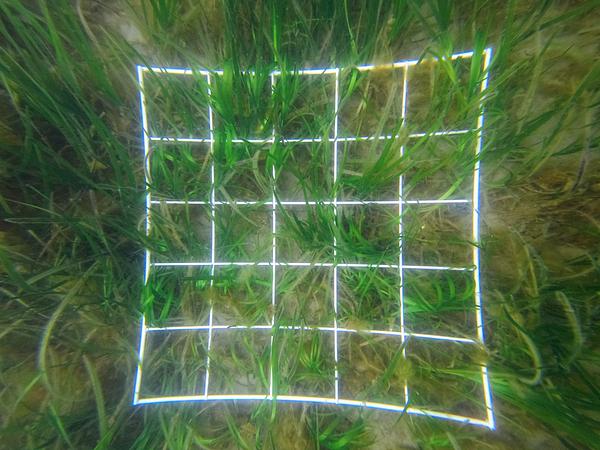
The denser the meadow, the higher the biodiversity potential. We were very happy to find that the seagrass in Loch Craignish looked very lush, and we commend the restoration efforts made to expand this ecosystem to other parts of the Loch. Next up was mapping the seagrass and control sites with GPS, transect tape and buoys so that we could get started with the bird surveys. We definitely put the inflatable kayak to good use for this, and the high wind sure made this part fun… Happy to report that shags, ducks, seals and otters were spotted feeding in the meadow!
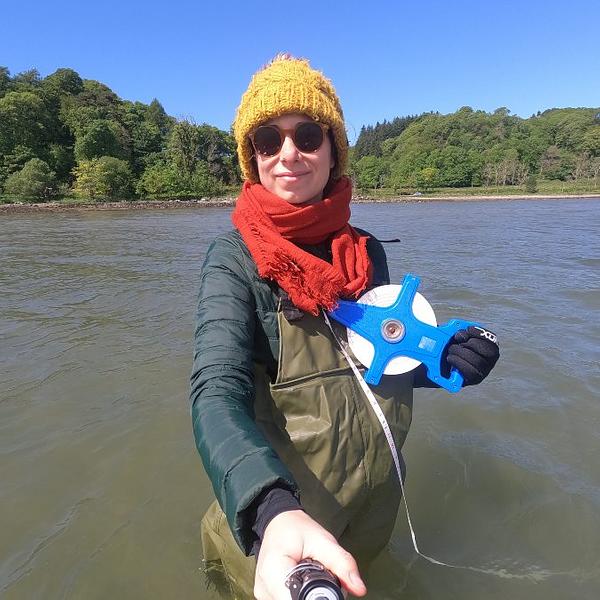
Lastly, we got our hands dirty and collected some sediment cores. Teamwork makes the dream work, and this was definitely an all hands-on deck activity in the slippery mud! 15cm pipes were inserted into the seabed, retrieved and taken back to the shore. Samples were then split into sections, rinsed and sieved and we sat around searching for invertebrates that might be of interest to bigger animals. Molluscs and snails were on the menu that day, which was a great way to end our little fieldtrip! Issy’s next steps will be to deploy baited underwater cameras to capture fish on film as well as recording the sounds of seagrass habitats with hydrophones (underwater microphones), best of luck!
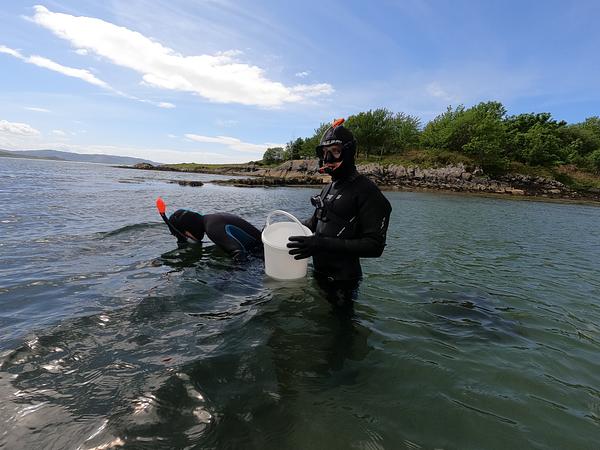
A big thank you to all involved and to the community that gave us a very warm welcome indeed. We return to the Firth of Forth with our heads filled with new ideas and full of inspiration! Watch this space for further seagrassy news and in the meantime don’t forget to sign-up to our Restoration Forth mailing list.
